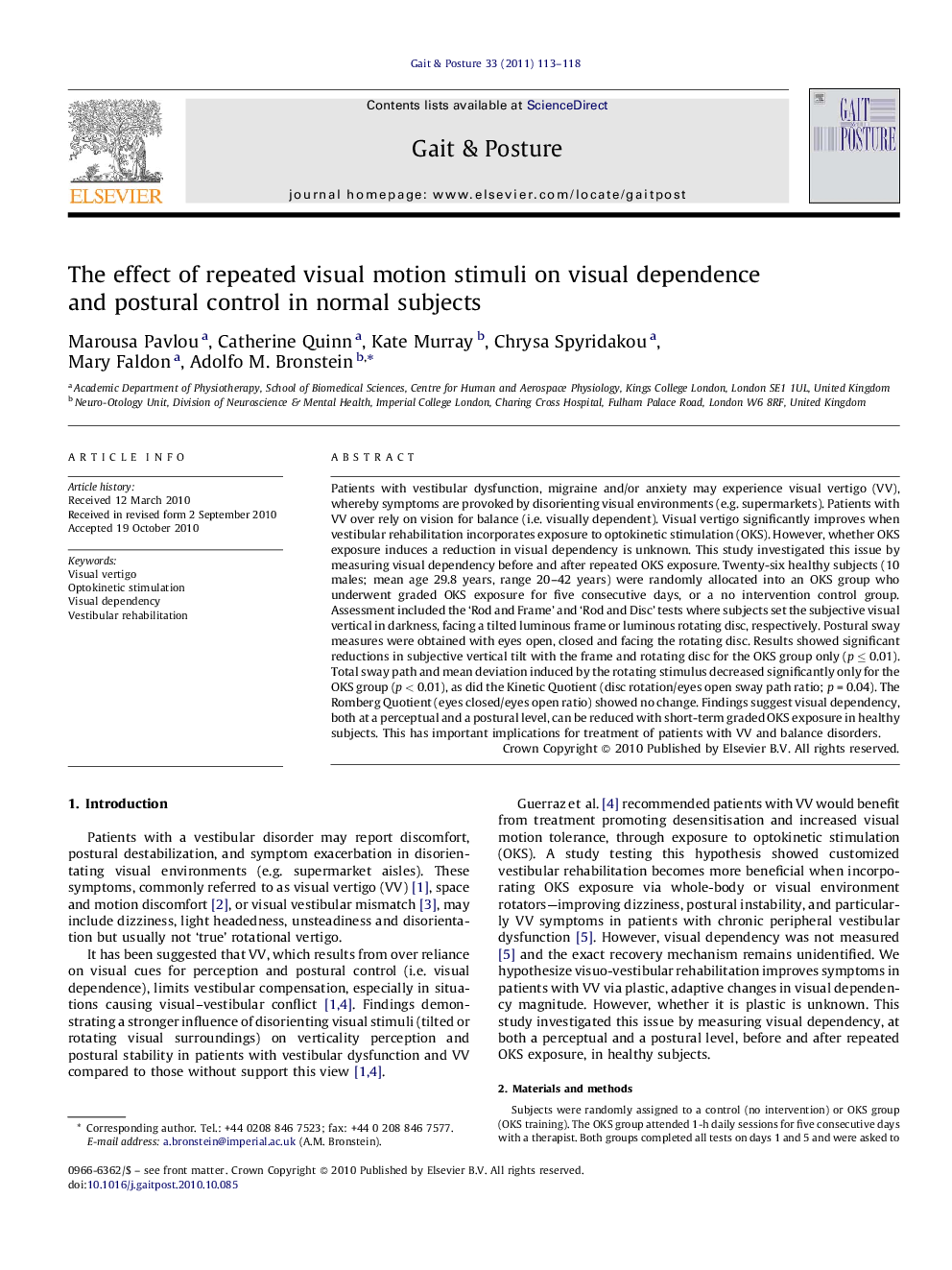| Article ID | Journal | Published Year | Pages | File Type |
|---|---|---|---|---|
| 6207655 | Gait & Posture | 2011 | 6 Pages |
Patients with vestibular dysfunction, migraine and/or anxiety may experience visual vertigo (VV), whereby symptoms are provoked by disorienting visual environments (e.g. supermarkets). Patients with VV over rely on vision for balance (i.e. visually dependent). Visual vertigo significantly improves when vestibular rehabilitation incorporates exposure to optokinetic stimulation (OKS). However, whether OKS exposure induces a reduction in visual dependency is unknown. This study investigated this issue by measuring visual dependency before and after repeated OKS exposure. Twenty-six healthy subjects (10 males; mean age 29.8 years, range 20-42 years) were randomly allocated into an OKS group who underwent graded OKS exposure for five consecutive days, or a no intervention control group. Assessment included the 'Rod and Frame' and 'Rod and Disc' tests where subjects set the subjective visual vertical in darkness, facing a tilted luminous frame or luminous rotating disc, respectively. Postural sway measures were obtained with eyes open, closed and facing the rotating disc. Results showed significant reductions in subjective vertical tilt with the frame and rotating disc for the OKS group only (p â¤Â 0.01). Total sway path and mean deviation induced by the rotating stimulus decreased significantly only for the OKS group (p < 0.01), as did the Kinetic Quotient (disc rotation/eyes open sway path ratio; p = 0.04). The Romberg Quotient (eyes closed/eyes open ratio) showed no change. Findings suggest visual dependency, both at a perceptual and a postural level, can be reduced with short-term graded OKS exposure in healthy subjects. This has important implications for treatment of patients with VV and balance disorders.
